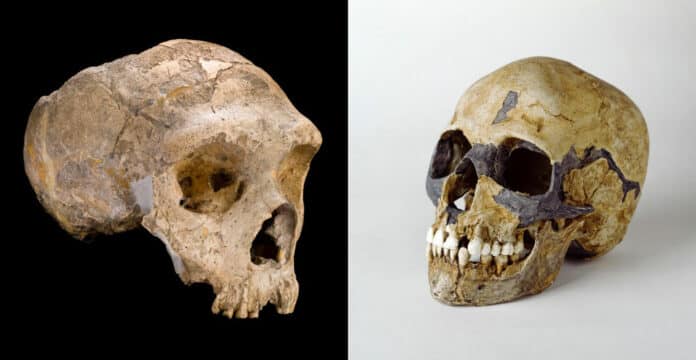Evidence suggests that the Neanderthal and Homo sapiens lineages began diverging about 600,000 years ago, evolving largely separately in Eurasia and Africa after that time. Neanderthal fossils have been discovered in southern Siberia and throughout Asia and Europe. It is estimated that they spent at least 400,000 years adapting in this setting, where the climate was generally cooler than it is now.
The forebears of our species, meantime, developed in Africa. Whether Homo sapiens are the direct offspring of a single group of prehistoric African hominins or the product of genetic admixture between other populations dispersed over the continent is currently unknown.
A new study proposes that Homo sapiens might be responsible for the extinction of Neanderthals. That too, not by violence, but by sex. In other words, making love might have put the Neanderthals on a path to extinction.
According to the findings, interbreeding with our ancestors may have decreased the number of Neanderthals breeding with one another, ultimately causing their extinction. The authors are hopeful that improvements in DNA sequencing technology will resolve this hypothesis by making more genomes accessible, even though only 32 Neanderthal genomes have been sequenced thus far, leaving it possible that the absence of Homo sapiens DNA in their genome is a quirk of sampling.
Professor Chris Stringer, the Museum’s Research Leader in Human Evolution, said, “Our knowledge of the interaction between Homo sapiens and Neanderthals has got more complex in the last few years, but it’s still rare to see scientific discussion of how the interbreeding between the groups happened.”
“We propose that this behavior could have led to the Neanderthals’ extinction if they were regularly breeding with Homo sapiens, which could have eroded their population until they disappeared.”
Based on genetic evidence, it appears that the two species first interacted when Homo sapiens started sometimes venturing outside of Africa about 250,000 years ago. There’s still a lack of knowledge on what Neanderthals looked or behaved like. Scientists can only speculate what Homo sapiens would have thought of their relatives.
Chris says, “The language barrier may have been reinforced by the individual attributes of both species, with comparisons of Neanderthal and Homo sapiens suggesting that the brains and vocal apparatus of the species were different. The genomes of Neanderthals also show that almost 600 genes were expressed differently between our species and theirs, particularly those associated with the face and voice.”
“Another prominent difference would have been the forehead, with Neanderthals possessing a prominent brow ridge that could have been used for social communication.”
However, it’s possible that our predecessors didn’t understand the messages that these ridges were attempting to send. According to several studies, Homo sapiens were able to use their eyebrows to communicate a variety of finer, transient signals because they had less brow ridges. These interactions eventually resulted in breeding between both species, but it is unclear exactly how this happened.
Interbreeding at this time may have resulted from mutual courtship or could have been less friendly. Encounters between separate groups of our closest living relatives, chimpanzees, show evidence of both behaviors.
Depending on the specific breeding pair, interbreeding either occurred or did not. In Late Neanderthal genomes from between 40 and 60,000 years ago, there is currently no proof of Homo sapiens genetics.
Chris said, “This may be due to the process of hybridization itself, as some species can only produce offspring in certain directions. For instance, pollen from the Capsella rubella plant can successfully fertilize Capsella grandiflora seeds, but not the other way round.”
“The lack of mitochondrial DNA, which is inherited through females, from Neanderthals in living humans has been suggested as evidence that only male Neanderthals and female Homo sapiens could mate, but there is also some evidence that male hybrids may have been less fertile than females.”
“With fewer Neanderthals breeding with each other and group sizes already small and scattered due to the environment, hybridisation outside of Neanderthal family groups could have helped push the species into decline. At the moment, however, there isn’t enough evidence to decide either way.”
“As more Neanderthal genomes are sequenced, we should be able to see whether any nuclear DNA from Homo sapiens was passed on to Neanderthals and demonstrate whether or not this idea is accurate.”
Journal Reference:
- Chris Stringer, Lucile Crete. Mapping Interactions of H. neanderthalensis and Homo sapiens from the Fossil and Genetic Records. PalaeoAnthropology. DOI: 10.48738/2022.iss2.130
